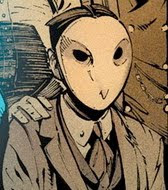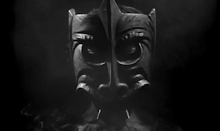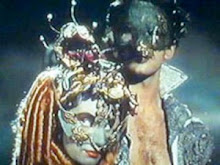
I was one of the three people who didn’t like The Girl With The Dragon Tattoo. Part of the problem was my admittedly high expectations for the book, I first heard it described as Ingmar Bergman’s Silence Of The Lambs. When one is told that something is one of the best crime novels in decades, one expects a bit more then an Agatha Christie knockoff with copious amounts of anal rape and an unlikeable self impressed hero. But beyond its lack of innovation, its slow pace and insultingly simple solutions to the films two mysteries made The Girl With The Dragon Tattoo damn near impossible for me to slog through. Not only did it fail to draw the moral terror and existential dread that great crime fiction from the likes of Lehane, Pelecanos, Chandler, Highsmith, Westlake, Peace, Mosely, and Ellroy do, it failed to even reach the level of workable boiler plate ala Michael Connely or Sue Grafton.
While the film cannot completely overcome book’s flaws, Oplev is as unable to integrate the unwieldy subplot involving a corrupt corporate titan that has taken Blomkievst down any better then Larssen was, nor is he able to make the mystery’s solutions seem anything less then unspeakably underwhelming. Nor is he able to streamline the many many pointless Red Herrings that Larsson has strewn through the novel, most involving Nazi’s and religion. However, he is able to minimize many of them, eliminating some particularly vacuous subplots and much of the skullduggery going on at Blomkvest’s magazine. While drawing on the source materials strong points, its ingenious set up for a “locked room mystery” its feeling of Scandinavian darkness and angst and the titular girl herself, an iconic gothy hacker with whom you do not want to fuck. All in all The Girl With The Dragon Tattoo is one of those happy rarities, a film markedly superior to its source material.
The story for the half dozen of you who haven’t read the book. Follows disgraced financial journalist Michael Blomkvist (Much more tolerable now that we are not privy to his long smug internal monologues) who is hired by former captain of industry Vanger to investigate the decades old disappearance of his granddaughter who disappeared from the family compound on a remote Swedish Island. The only bridge off had been blocked in a traffic accident, and her body was never found, leaving her disappearance a mystery that has haunted the old man, and his family full of horrid people for the long years afterwards.
Artfully juxtaposing the warm domesticity of Blomkvist’s sister’s middle class family with the Aristocratic corrupt venality of Haus Vanger. Oplev like DePalma’s misguided adaptation of The Black Dahlia portrays the upper class as preening vicious jackal’s who prey on each other when they get bored with the meals the make of the poor.
This is followed by a counter narrative (indeed if there is one thing that the book has over the film its that the saga of Lisbeth Sanders seems to be even more separated from the Blomkvist’s ongoings then they did in the novel) following Sanders as she gets sexually assaulted by her guardian and then goes on to get some righteous revenge. It should be warned that the film features not one but two graphic (though to the film’s credit not in the least eroticized or gratuitous), prolonged scenes of rape.
These scenes match up thematically if not narratively to the on goings at Haus Vanger. The film’s original title is Men Who Hate Women. Both the book, but I think even the film more so are focused on the way misogyny fuels violence. The book serves as an angry polemic about how society ignores and mistreats “disposible women.” The film actually deepens the theme, subtly drawing it out unlike the novel which just bluntly stated raw statistics. The film subtly draws to memory the works of Hitchcock, De Palma, and Von Trier without being beholden to any of them and quietly wonders why it is men love to do horrible things to beautiful women. His dark avenger of these deeds Lisbeth Salander was the one undeniable success of Larsson’s work, and Oplev and actress Noomi Replace do justice to his seminal creation.
Opley does a fine job overall, even if the quality of the digital film is unusually poor. He invests the film with a dark rich color palate and dark tone, and has a few moments including the killer’s reveal and final confrontation shot mostly out of focus as Blomkvist swims in and out of consciousness that borders of virtuosic filmmaking.
The Girl With The Dragon Tattoo is destined for an American remake, with Tarantino and Fincher both expressing interest in getting the job done. What seemed sensible on the other side of Opley’s film seems less so now. I can see little room for improvement in an adaptation of The Girl With The Dragon Tattoo, something I certainly couldn’t say for the source material.



































































































No comments:
Post a Comment